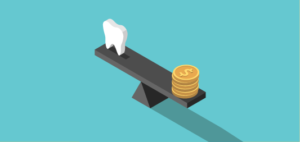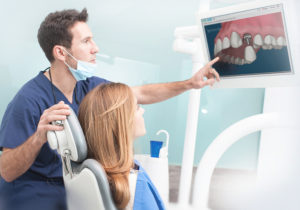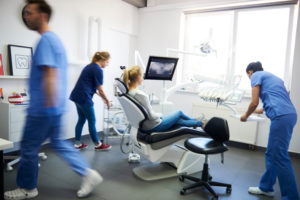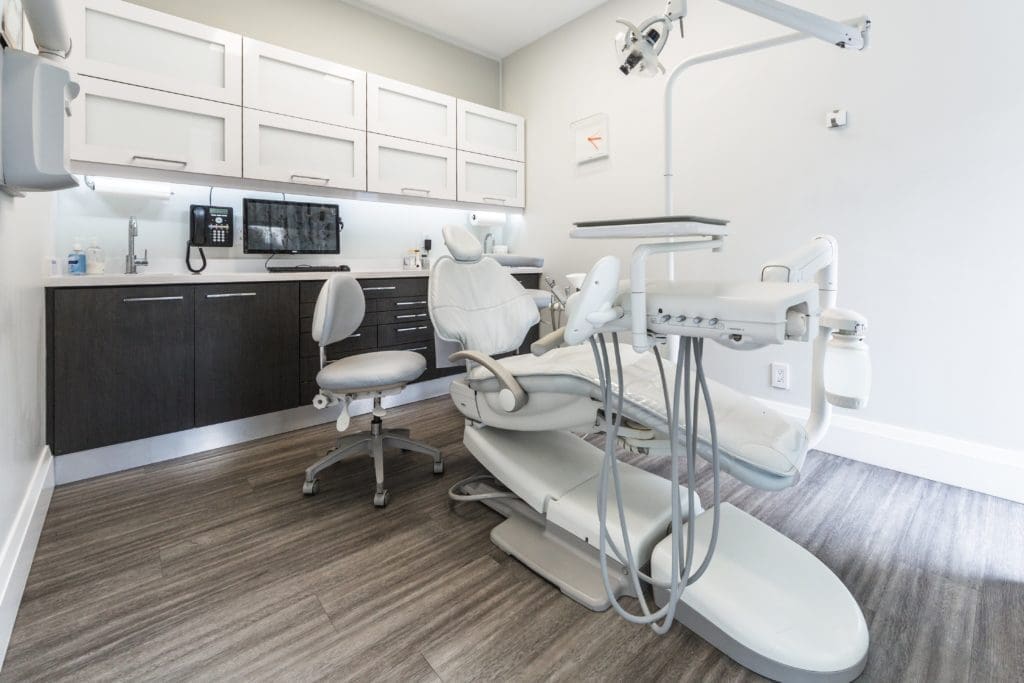 So, you feel like you’ve hit a ceiling with production, and are considering expanding your office—whether it’s moving to a completely new location or some form of an addition to your current office.
So, you feel like you’ve hit a ceiling with production, and are considering expanding your office—whether it’s moving to a completely new location or some form of an addition to your current office.
Before you make any decisions, I wanted to share a few points to consider, as one of the bigger mistakes you can make is physical location expansion when you’re not actually ready. And while we already know it’s expensive, it can be more expensive than you think in the long run.
And I can’t tell you how many times I’ve seen the “if we build it, patients will come…” mindset end up as nothing more than increased overhead while still producing the same amount!
On the flip side, if a move or adding space is justified, it can really enhance the practice, revenues and profitability. The key word here being: justified.
So, with that, here are a few things to consider if more space or a practice move is potentially on the agenda any time in the near future:
1. Confront debt you’ll be taking on
 One of the dangers of expanding your practice when you’re not actually ready is getting yourself into a lot of debt.
One of the dangers of expanding your practice when you’re not actually ready is getting yourself into a lot of debt.
On the low-end, you’re looking at anywhere from $100-150 per square foot and on the high-end you’re looking at $200-250 per square foot, depending on the equipment you choose.
And if you’re over 40 years old, and you don’t see the expected increases in revenue and profitability, this can be a retirement plan killer.
You can actually create a loan amortization sheet in Excel to see what your monthly payments would look like and what the cumulative interest would be throughout the loan period. Simply open Excel and choose Loan Amortization Schedule from their templates.
For example, let’s say you borrow $500,000 at a 3.1% interest rate for 10 years. Your monthly payment would be $4,851.
Now, that’s a lot if you’re not actually producing enough to cover that extra cost.
And let’s just say you instead put that money into a retirement fund. Over 10 years you could see up to $1.1 million. So the question becomes: will this build-out net you $1.1 million in profit over the next 10 years?
2. Ask yourself this: Is there anything else you could do to maximize efficiency/productivity before making the leap?
The hard fact is that physical expansion or change as a solution to productivity would come after you’ve done everything possible to maximize productivity and profitability with what you currently have.
As a general rule of thumb, I like to see a primary fee-for-service office doing about $50,000 per chair. And for a more HMO/PPO driven office, it should at least be over $25,000 per chair. Now, these numbers vary depending on where your practice is located and the cost of living for that area.
Now, if you’re not hitting those number yet (or something comparable depending on your area), you should look through the various parts of your practice, and find what needs improvement.
Common points are:
a) Increasing the average dollar value per visit.
 Dentists that attend the MGE Communication & Sales Seminars, on average, increase their collections by $288,000 within the first year after attending. Did they add more chairs? No! They improved their case acceptance rate for comprehensive treatment plans. Instead of doing single-tooth dentistry and just what the insurance covers, they begin getting their patients to understand the importance of completing the optimal treatment plan to get fully healthy.
Dentists that attend the MGE Communication & Sales Seminars, on average, increase their collections by $288,000 within the first year after attending. Did they add more chairs? No! They improved their case acceptance rate for comprehensive treatment plans. Instead of doing single-tooth dentistry and just what the insurance covers, they begin getting their patients to understand the importance of completing the optimal treatment plan to get fully healthy.
When you’re seeing a patient to place the four crowns they need, instead of just the one that insurance covered, you get a lot more production done in less time.
b) Dropping reduced-fee insurance plans.
One of the biggest factors that puts a ceiling on your collections is low-paying insurances. I don’t want to rehash this whole topic here (read this article for more on dropping insurance plans and raising your fees), but know that it IS possible to drop or renegotiate your insurance plans. Becoming more fee-for-service may enable you to truly maximize your collections and give you the extra cash to expand properly (if you still wish to).
We have lots of clients in largely low-income, insurance-driven areas that still managed to go fee-for-service and improve their profitability drastically. If you want to crunch the numbers to see what would happen if you dropped insurance plans, download the spreadsheet here.
c) Filling up the hidden gaps/inefficiencies on the schedule
Over the course of several years, I’ve personally spoken with thousands of dentists and I’ve found that the average dentist does not utilize many of the most useful aspects of their scheduling software—and can actually fit about 40% more production into the same amount of time. And as an aside, scheduling efficiently would most likely require having more than one assistant. And your assistants will need to be efficient and really know their business!
As far as how to put the schedule together, we cover this in the Scheduling Coordinator Training Course on our on-demand video training platform, DDS Success. I highly suggest you watch that course. If you’re running an inefficient schedule, it’s a lot cheaper than a build-out!
d) Training your team
To truly evaluate the production ceiling in your current space, you need to run a tight ship. And the only way to do that is to have a well-trained team and efficient front office systems. In order for the schedule to run seamlessly, for patients to show up, for case acceptance to be high, everyone needs to do their part flawlessly. So again, check out DDS Success for team training. You can schedule a free demo here.
3. Consider running two split shifts
 Before you decide to expand, one option to consider is to run two split shifts to further maximize profitability.
Before you decide to expand, one option to consider is to run two split shifts to further maximize profitability.
The first shift could be from 7am to 1pm and the second shift would be 2pm to 8pm. This increases your hours by 4 and you just made a 50% boost in potential production. Each shift would have a separate team (including an associate, etc.). You could also add Saturdays under this model.
I’ve seen this work especially in areas where space is hard to come by or really expensive, or where expanding the current office is not a possibility. What’s nice about this is it doesn’t have to increase the owner/doctor’s hours.
And the truth is you’re paying rent for an office 24/7 for 30-31 days a month! You could most likely use your space more than you do now!
These options could allow you to become more profitable while making sure your overhead doesn’t go through the roof – as rent is already paid!
4. Track your numbers
 Many practices don’t actually track their numbers – number of new patients each month, collections, production, cancellations, patient attrition, etc.
Many practices don’t actually track their numbers – number of new patients each month, collections, production, cancellations, patient attrition, etc.
So, it may seem like you’re really busy and it may feel like it’s time to build an addition or get another practice. But is your practice actually ready? The only way to truthfully know that answer is to go off statistics by tracking your numbers.
If you need help tracking these numbers or if you’re still on the fence about expanding, we’d be happy to do a free practice evaluation with you and give you some direction. No charge, no commitments, no strings attached. Schedule a free consultation here.
There are definitely some scenarios where you really do need to add more space. If you’re already pushing towards that $50,000-per-op number or you simply aren’t able to fit hygiene patients in, you may need more chairs. Again, feel free to schedule a free consultation and we can give you our advice.
I hope this article gives you some inspiration and ideas of how you can maximize production and profitability in your current practice so you avoid a mistake many dentists make. If you have any questions, please email me at jeffs@mgeonline.com or you can call us at 800-640-1140.



No Comments
Be the first to start a conversation